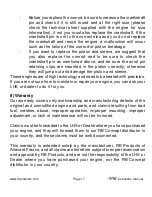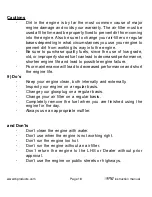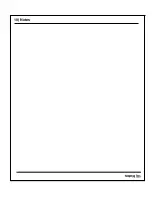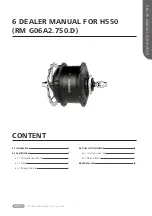
flat. This is important to avoid any distortion of the crankcase and also to
optimize heat dissipation through the chassis.
Tip:
To flatten the bottom part of the engine mounts, attach the
engine mounts to the engine, and then rub the bottom of the
mounts on a piece of sandpaper on a flat surface until there is
full surface contact. Mount the engine on the chassis and align
the clutch-pinion with the spur-gear and adjust the gear mesh.
Tip:
Use a piece of paper between the pinion and the gear when
tightening the engine mounting screws and after remove the
paper. This should give you the right distance in the gear mesh.
When the engine is mounted in the car you have to connect the fuel and
pressure lines and hook up the throttle linkage to the carburetor. Check
the linkage so that the carburetor opens and closes smoothly without
binding, also check if the carburetor opens and closes completely.
4) How to start your engine
Note: The piston of the engine can feel tight at the top of its stroke
(TDC) when the engine is cold, and this is normal. The piston/sleeve
is designed in a way that when the engine has reached its normal
temperature this fit is perfect and so the engine produces the best
power possible.
1) Fill up the fuel tank.
2) When starting the engine for the first time of the day, prime
the engine by covering the exhaust pipe stinger while turning the flywheel
with the help of the starter box for 2 seconds; when using a pull starter,
pull 4 to 5 times. This will build up extra pressure in the pipe and in the
pressure line to the fuel tank, causing the fuel to be pushed into the
carburetor.
www.rbproducts.com
Page 9
instruction manual
Summary of Contents for Concept engines
Page 19: ...10 Notes 10 Notes ...





































